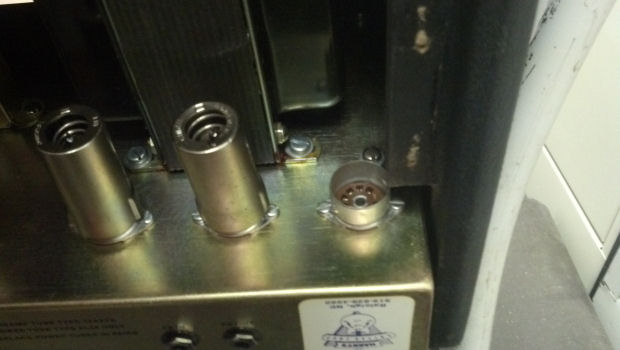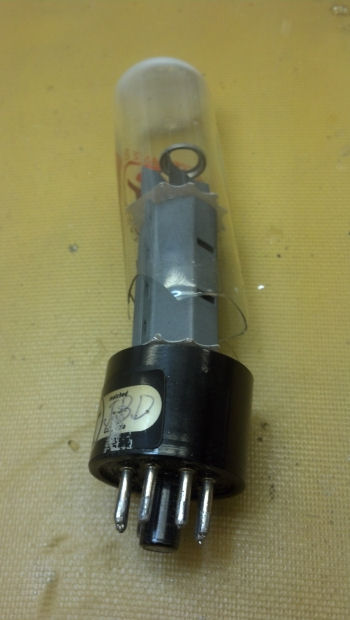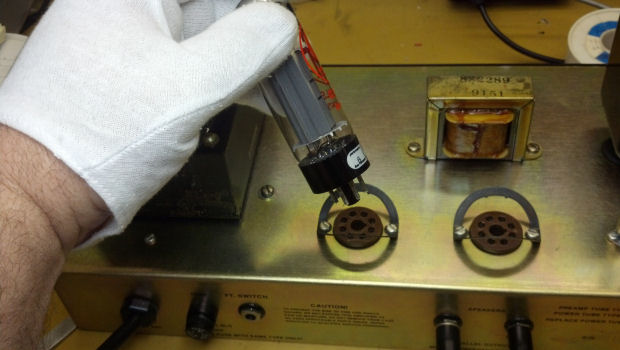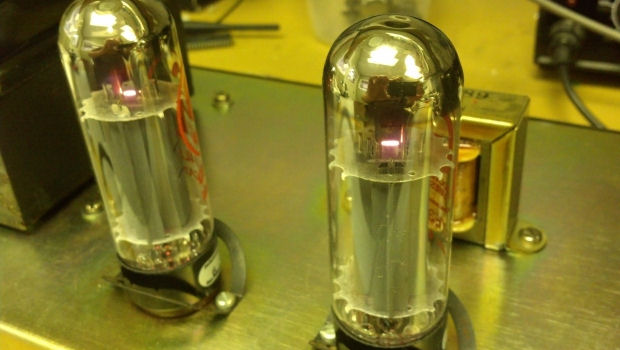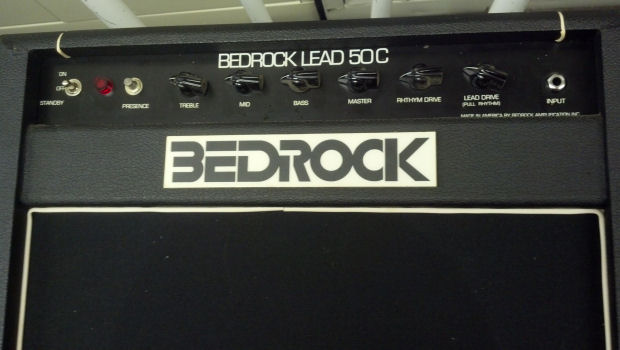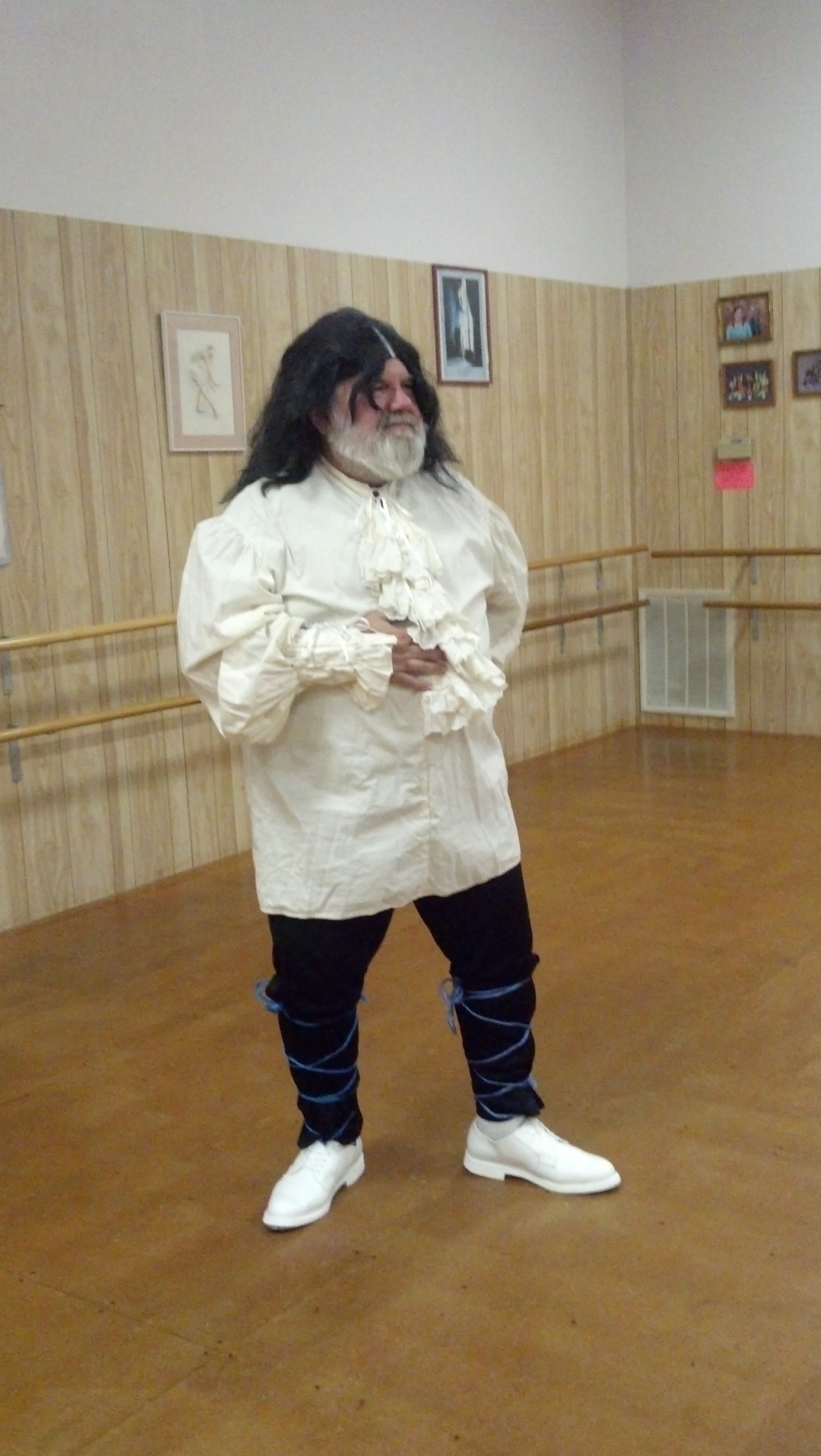Pete from Pasadena is the proud owner of this like-new Bedrock amp. Except, it doesn’t play anymore. As he makes his living doing guitar setups and repairs for a major national chain, he lamented that he didn’t have the desire to reach into high voltage and die. But he really missed playing thru this amp, which would have been considered a boutique amplifier nowadays. Bedrock Amps was a once-fine amplifier builder, sued out of existence by greedy capitalists in the day before the Internet, so there are no manuals for this particular model available online. No Problem, I told him, and lugged the amp back to the shop.
I inverted the amplifier and disconnected the loudspeaker. To remove the chassis from the cabinet, I had to remove one tube and shield. Tight fit!
The two large tubes are the EL34 pair. It appears that the envelope of the tube on the left had been compromised somehow, allowing air and moisture into the tube. Note that the silver ‘getter’ was ‘gotten’ and turned white.
Sure enough, the envelope was cracked near the base.
This is not an unusual failure mode for vacuum tubes.
The thermal coefficient of expansion of steel, widely used throughout the internal structure of the tube, is about seven times that of glass. Where the steel and glass meet is right at the tube base.
Worse, with the chassis inverted, the rising heat would raise the temperature of the base of the tube higher than the rest of the envelope, further exacerbating this type of failure.
From time to time, I will see an amplifier chassis with holes drilled around the tube sockets, in an attempt to mitigate this problem. But we cannot escape the laws of physics forever!
Interestingly, the glass envelopes of these 12AX7s were slightly larger than the JAN-compliant tube pin straighteners in my tube tester. Not a big deal, because I can unscrew the pin straighteners from the aluminum plate and use the back side of the tube pin straightener to clean up the pins, without interference from the aluminum walls on the straighteners that you see here. All the tubes in this amp were GrooveTubes, with the familiar clear plastic labels. But the thickness of the label was not the source of the interference… the glass envelope is slightly larger than American-made tubes of old.
All of the preamp tubes were in excellent shape, so they were wiped off and set aside for now.
Flipping the chassis over reveals a neat hybrid of point-to-point wiring with an efficient circuit board layout. All of the components operate WELL within their ratings. Whoever did the design and construction of this amplifier (reminds me of a Duncan amp…) had the head of an engineer and the heart of an artist. Here, I’m checking the ESR of all the caps with a Blue ESR Meter from AnaTek.
The only sign of any deterioration I could find was this thin layer of mildew which appeared on the red insulated wire. And only the red insulation. You have probably seen this same light-colored dust on Craftsman screw driver handles that have been stored for a long time. The mildew is of no consequence here, but I cleaned it off anyway.
Time for a new set of final amp tubes. These are exactly the same type and rating as what was removed.
The white gloves keep finger oil away from the glass. Yeah, I know that the plastic label on GrooveTubes obviates the need for Clean Room procedures, but I’m old school; Old habits die hard.
The tube base locks were bent back upwards to grab the tube bases. As you might guess, this is mildly important on amp chassis such as this one, which live their lives inverted.
Yeah, no matter how many amps I work on, “First Light” always makes the hair on my arms stand up.
These are the 100W eight ohm resistive load blocks that I use to check amplifier performance. The basic concept of bias checking with an oscilloscope, and performance verification under resistive load is described at various places on the Internet. Here you see an oscilloscope probe tied right across the load. Another lead was added to at the same point in the circuit for the THD meter on the bench.
A 400Hz sinewave was applied to the ‘clean’ channel of the amp. After everything was adjusted, output was gradually increased until the THD meter began to show distortion. This screenshot shows clean crossover between each output and just a hint of flat-topping (probably the origin of the detected distortion.) You are looking at 78 watts RMS at 0.1% THD from an amp rated at 50 watts. As I said, all the components of this amp are conservatively rated and operated well within their parameters, and this is proof.
When I next saw Pete, his grin reached from ear to ear. His band held a successful audition and he couldn’t have been happier with his band and his amp. He promises me video… Stay Tuned!


